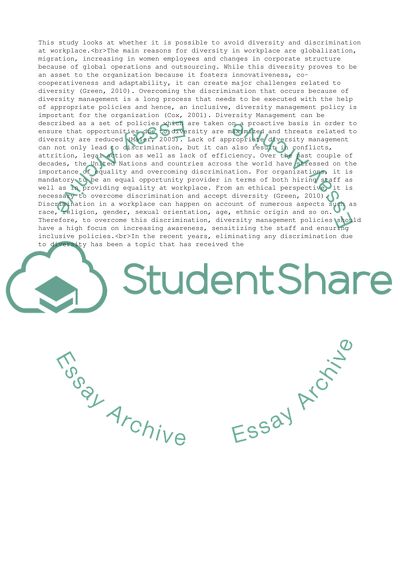Cite this document
(Diversity and discrimination in the work place, can it ever be Essay, n.d.)
Diversity and discrimination in the work place, can it ever be Essay. https://studentshare.org/human-resources/1791689-diversity-and-discrimination-in-the-work-place-can-it-ever-be-overcome-discuss-by-providing-relevant-examples
Diversity and discrimination in the work place, can it ever be Essay. https://studentshare.org/human-resources/1791689-diversity-and-discrimination-in-the-work-place-can-it-ever-be-overcome-discuss-by-providing-relevant-examples
(Diversity and Discrimination in the Work Place, Can It Ever Be Essay)
Diversity and Discrimination in the Work Place, Can It Ever Be Essay. https://studentshare.org/human-resources/1791689-diversity-and-discrimination-in-the-work-place-can-it-ever-be-overcome-discuss-by-providing-relevant-examples.
Diversity and Discrimination in the Work Place, Can It Ever Be Essay. https://studentshare.org/human-resources/1791689-diversity-and-discrimination-in-the-work-place-can-it-ever-be-overcome-discuss-by-providing-relevant-examples.
“Diversity and Discrimination in the Work Place, Can It Ever Be Essay”. https://studentshare.org/human-resources/1791689-diversity-and-discrimination-in-the-work-place-can-it-ever-be-overcome-discuss-by-providing-relevant-examples.


